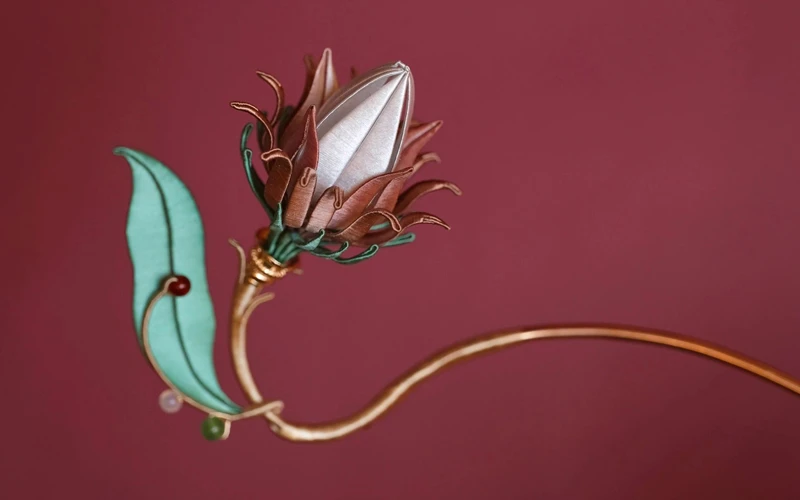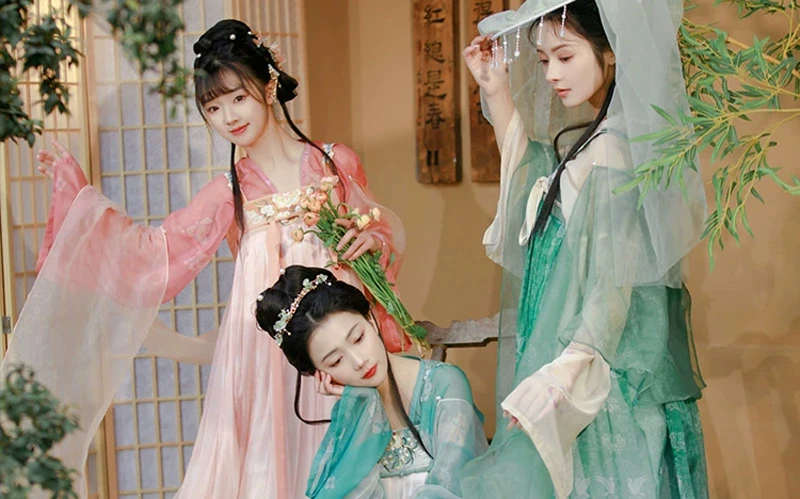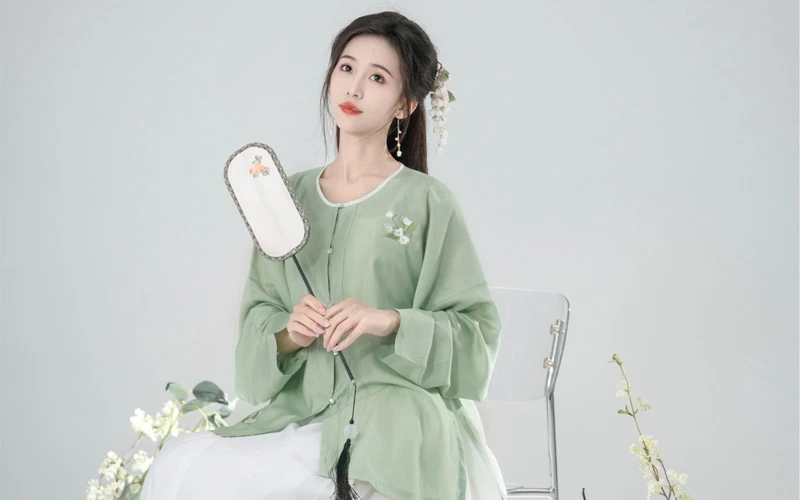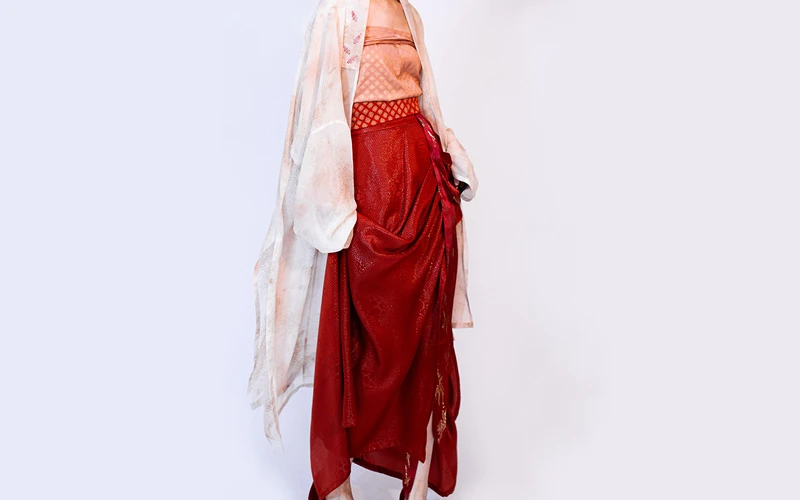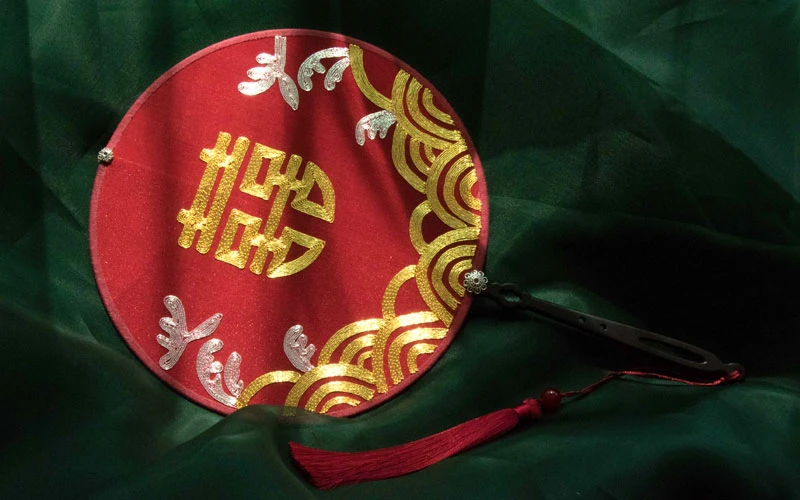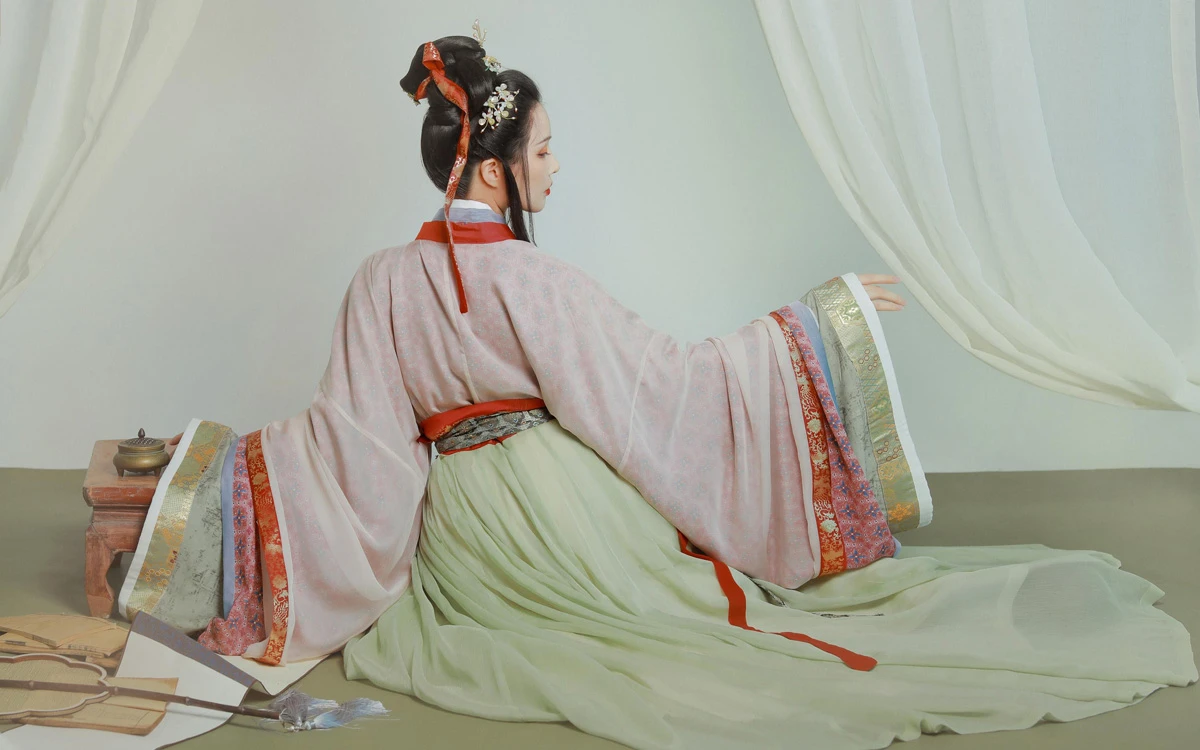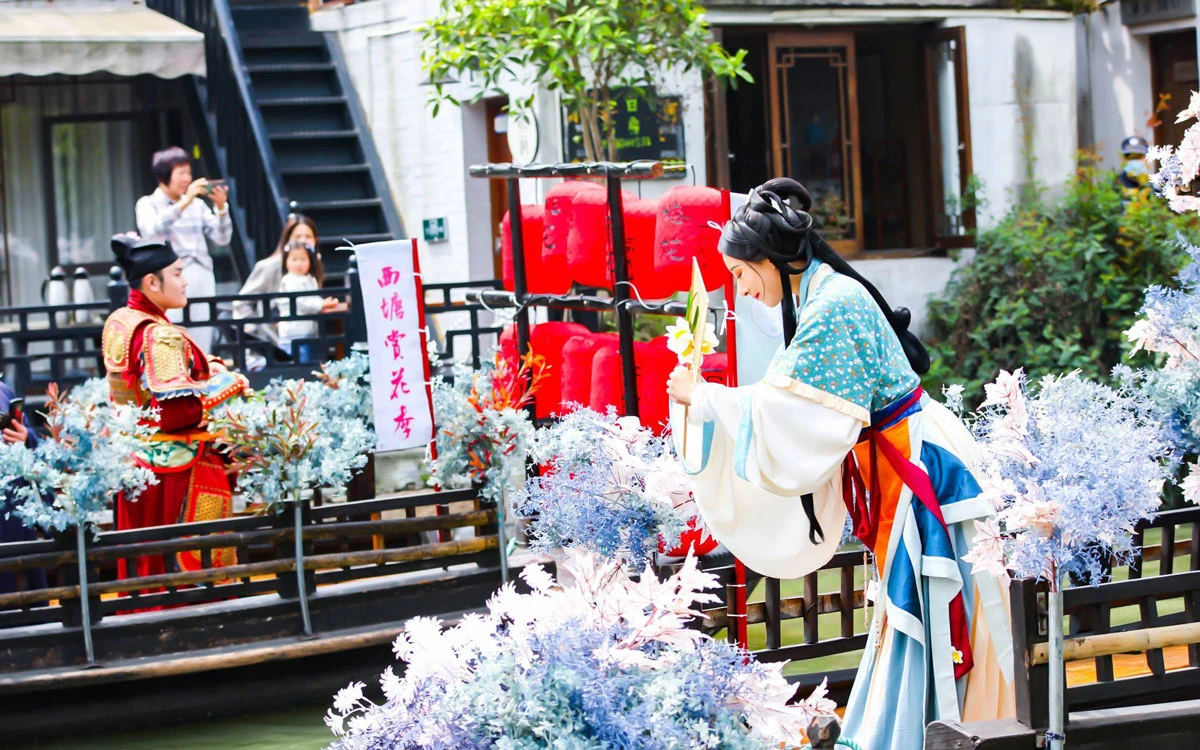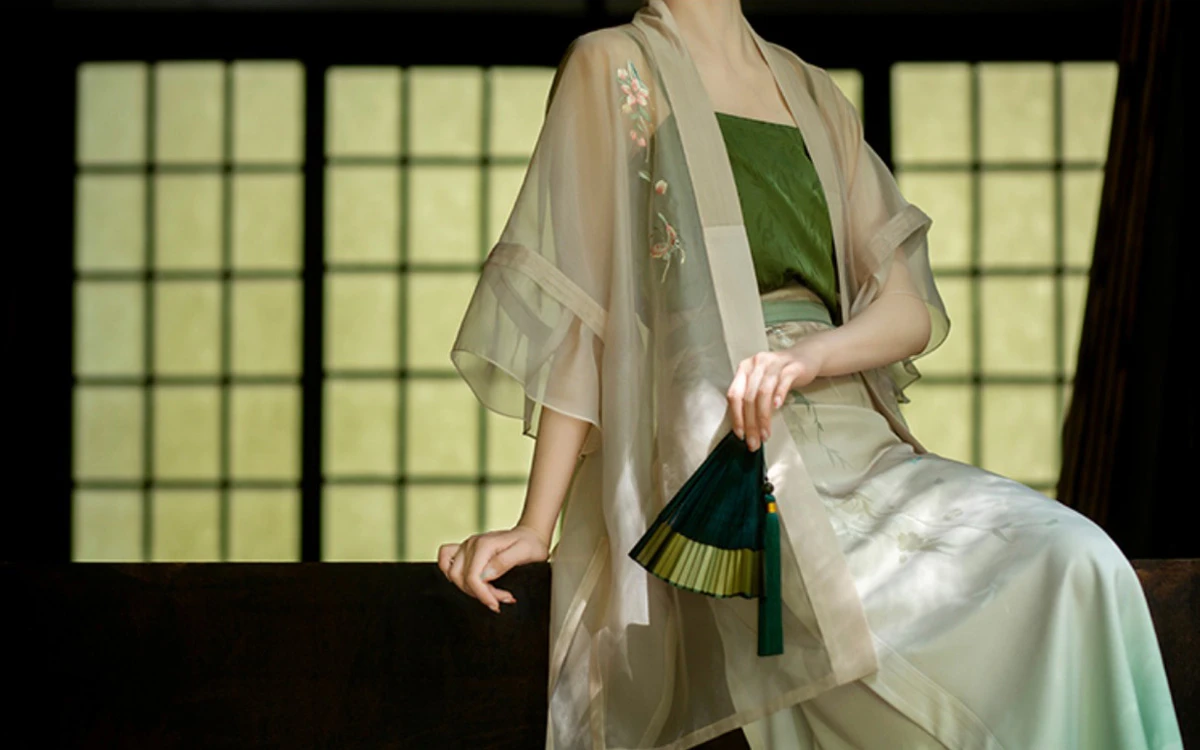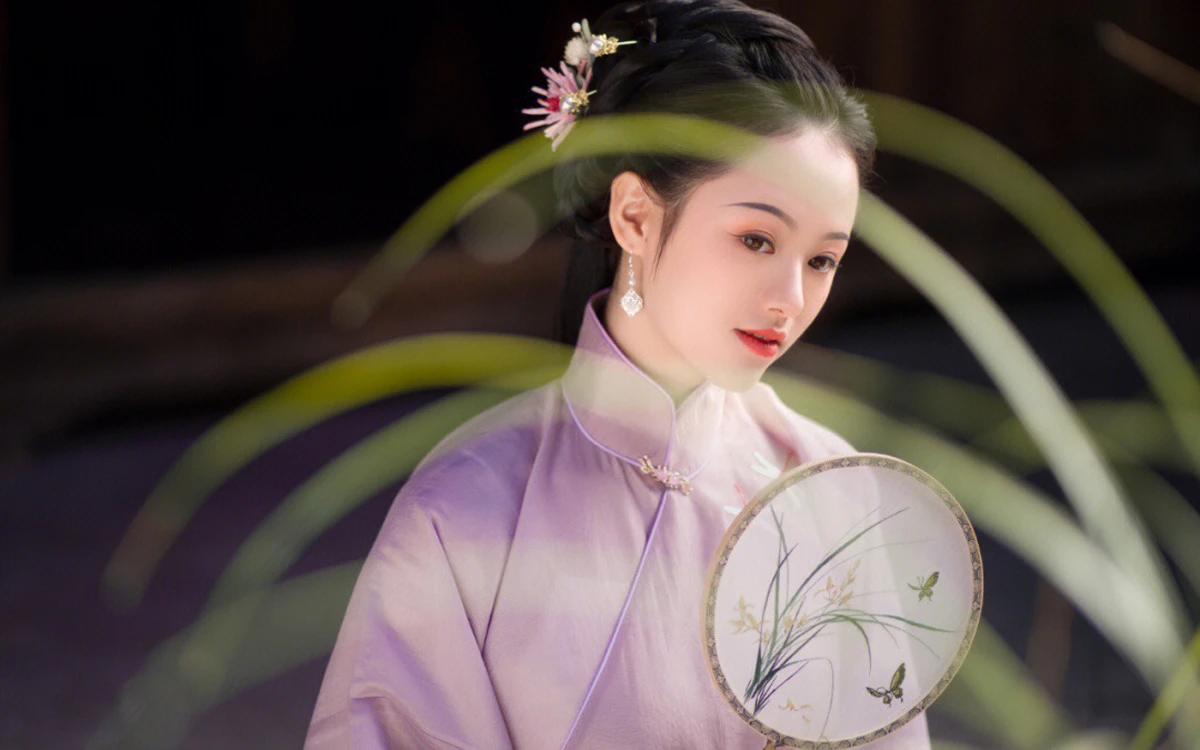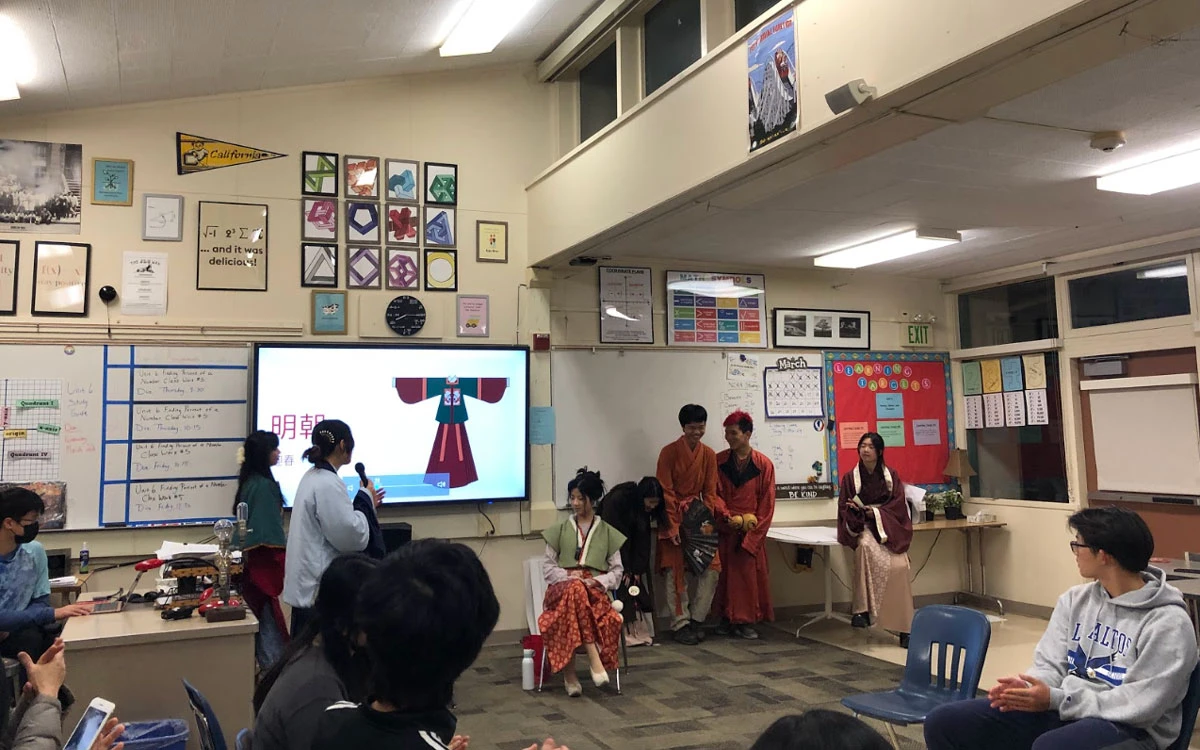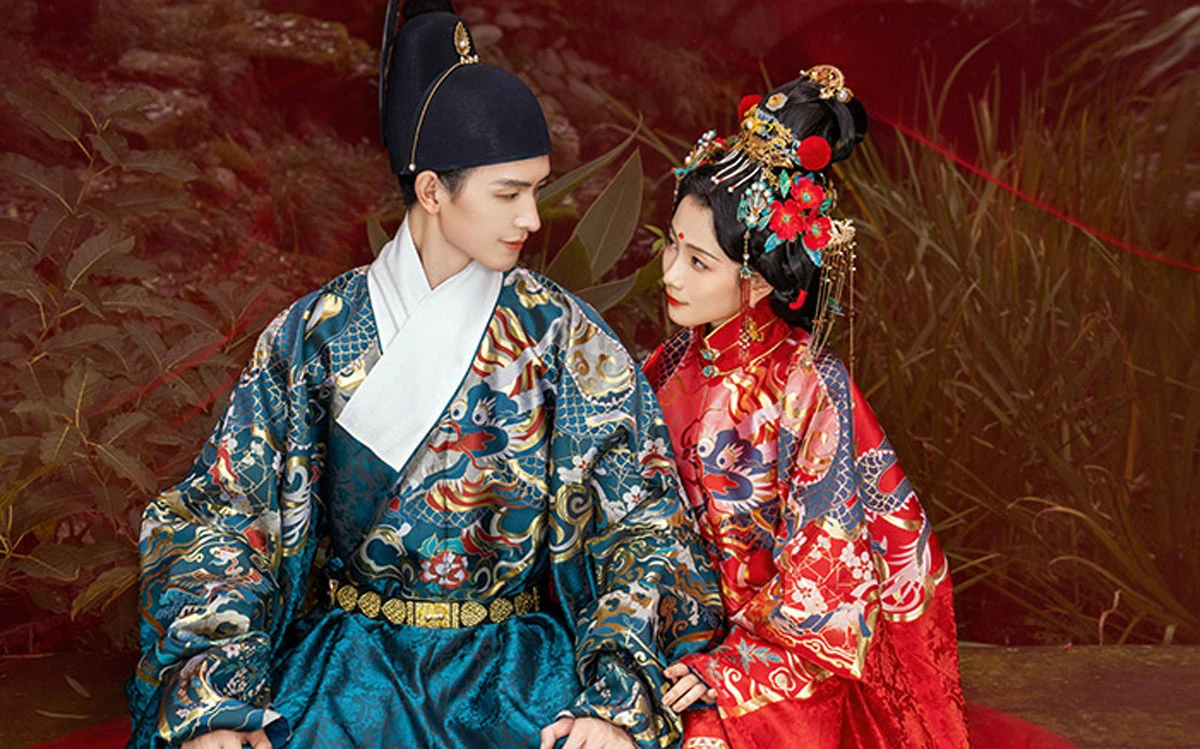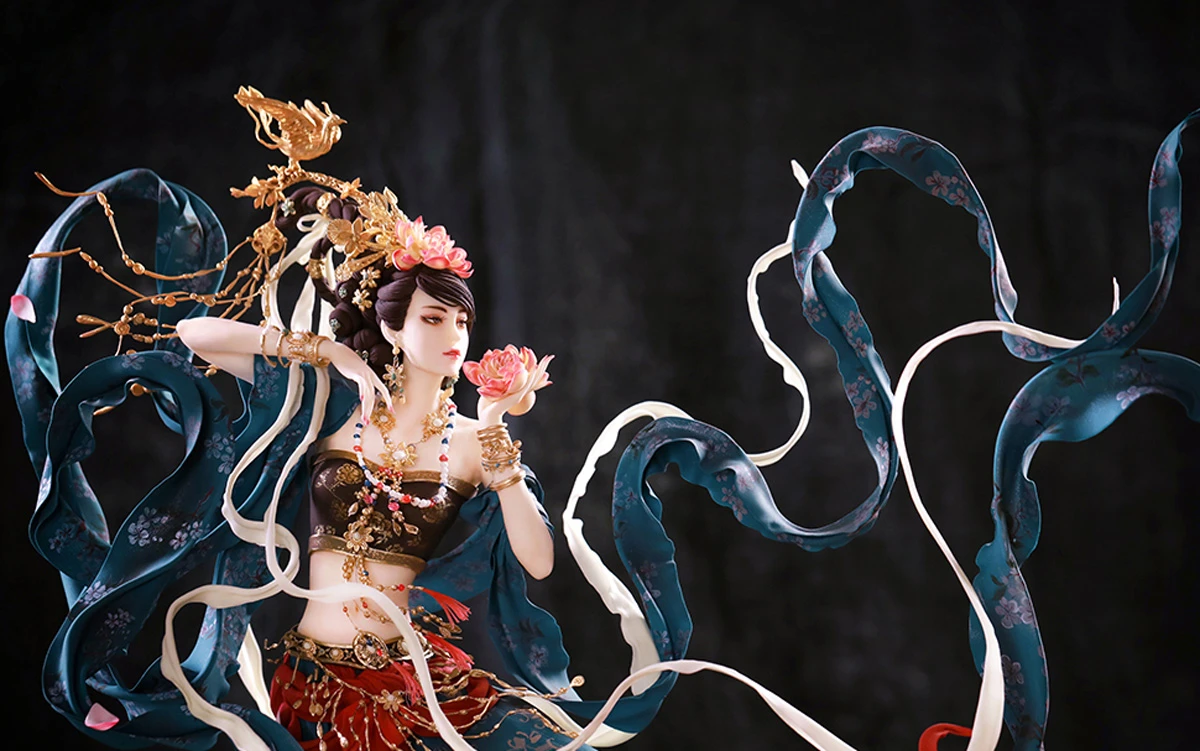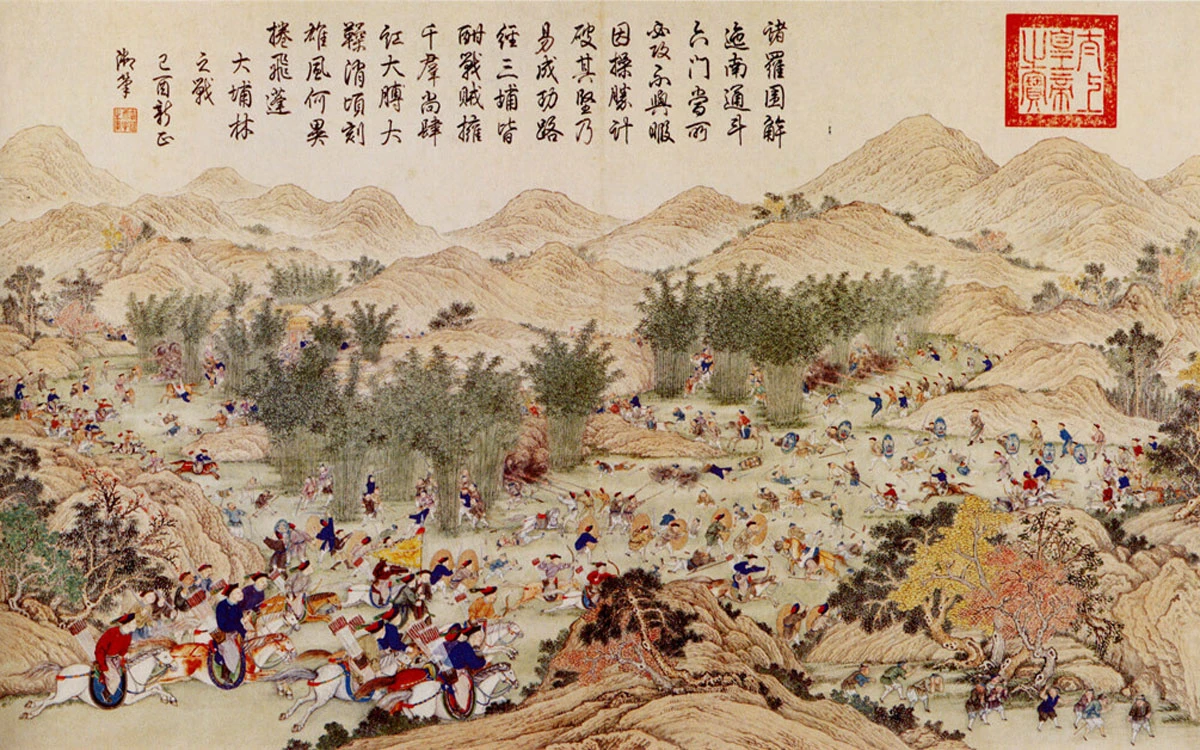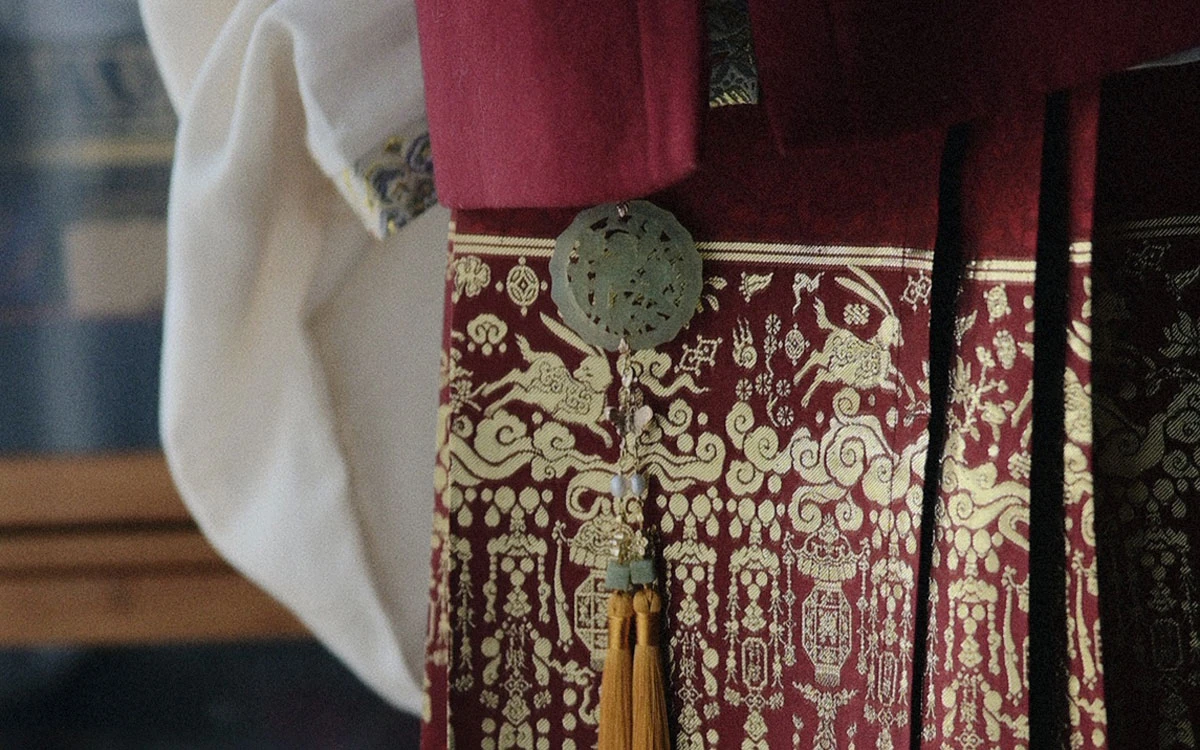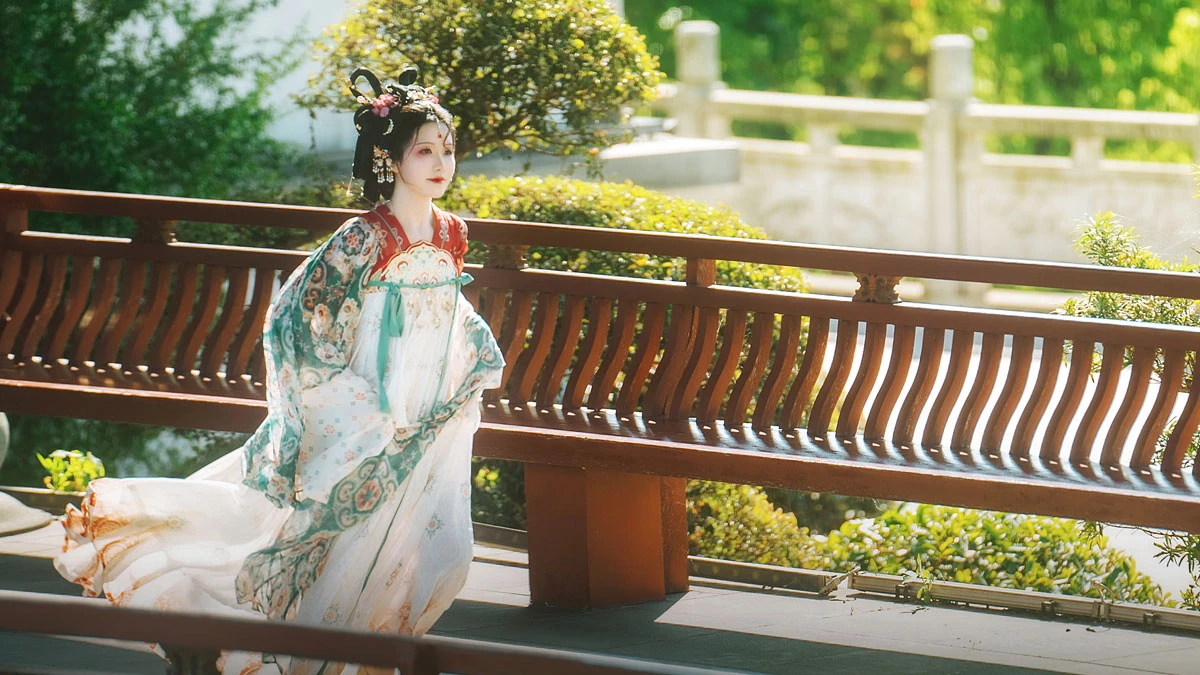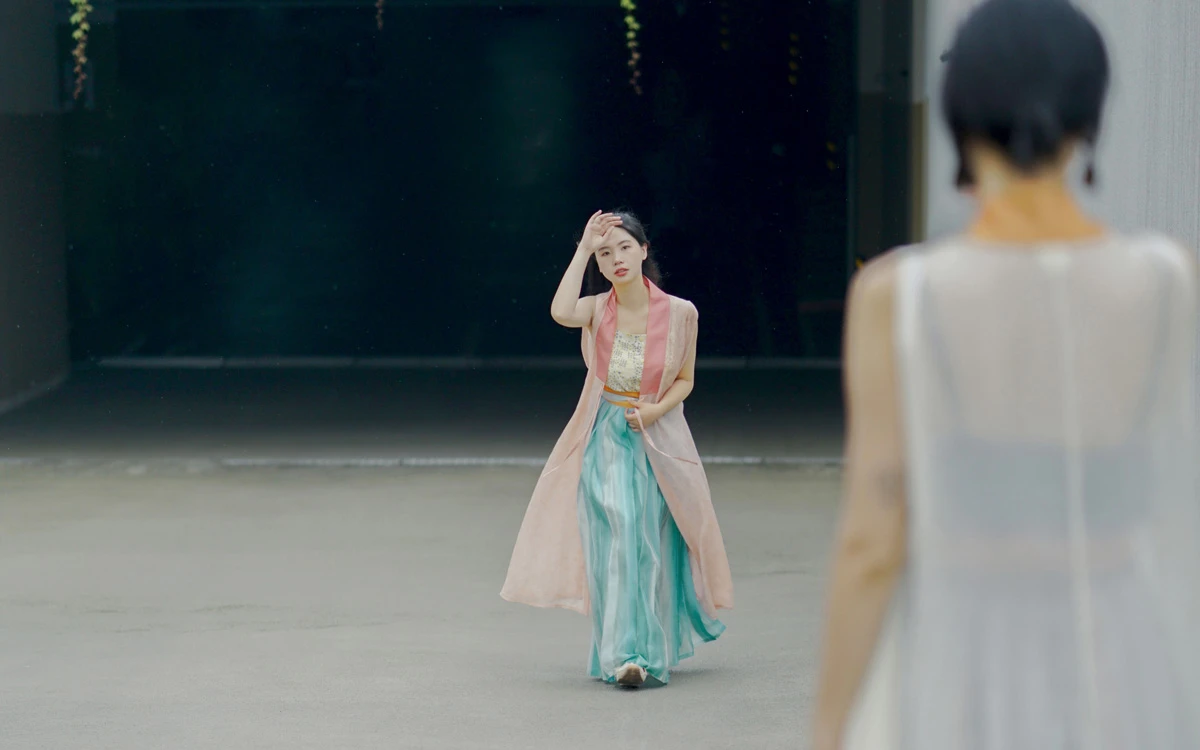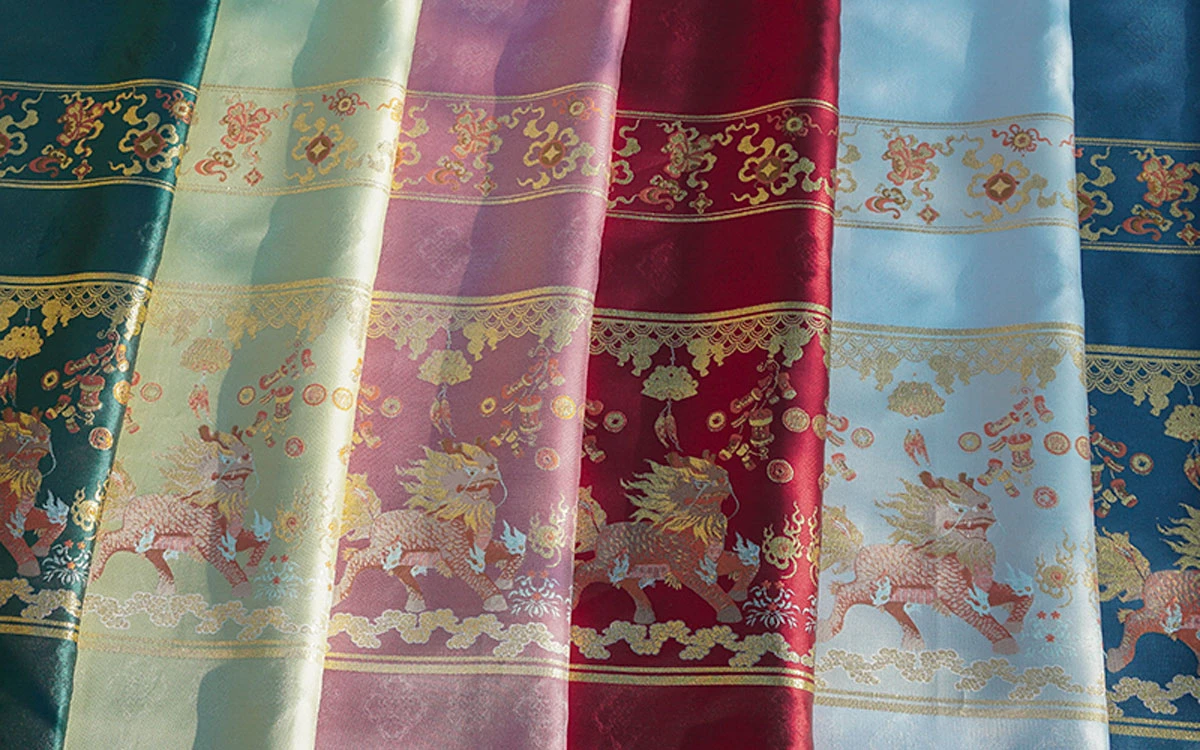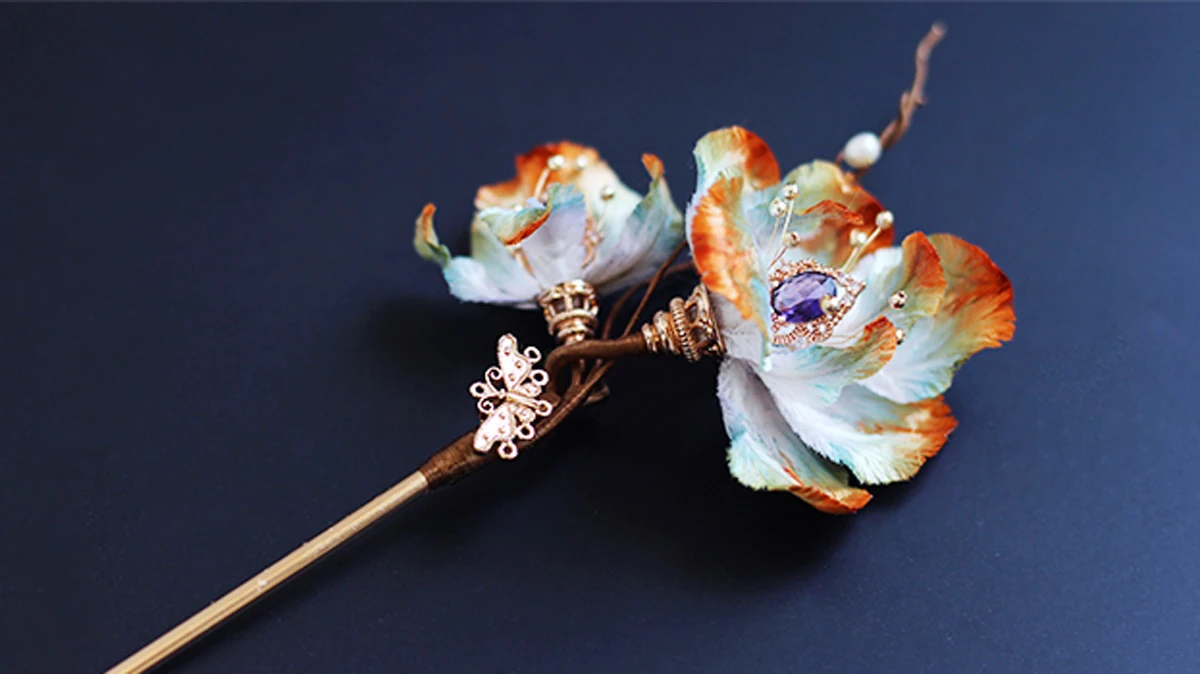Article
搜索结果:
-
Hanfu Accessory: Wrapped Flower History and Chan Hua Basic DIY Steps
Vocab of Wrapped Flower Wrapped flower - 缠花 (chán huā) - a name used to called artificially made flower using the techniques of wrapping colored silk thread around cut-out pieces and combining each parts together to make flowers, animals, insects, etc. Spring Flower - 春仔花 (chūn zǐ huā) or 春花 (chūn huā). Used in this situation would mean various types of flower combined into a small batch each flower symbolize for different meanings in China. In this case, the flower would be a wrapped flower rather than a real flower. History of Wrapped Flower Through ancient China, people held a profound appreciation for nature, which manifested in their beliefs of deities who governed natural forces to their interest in making poetry, music, and artworks that represented the beauty they saw. One remarkable custom in ancient China were the flower hair-pinning practice known as "簪花的习俗 (zān huā de xí sú)," where both men and women adorned their hair or hat with flowers, either fresh or artificially made. Talking about flowers, there are many artificial flower craftsmen that have passed down for centuries, including "ronghua" and "wrapped flower." The art of wrapped flowers originated during the Ming Dynasty and arrived in the… -
Discovering 8 Hanfu Color Styles: Timeless Elegance in Traditional Dress
Nowadays, hanfu is attracting more and more attention from enthusiasts due to its traditional charm. When choosing hanfu, enthusiasts no longer solely focus on the form, but also pay attention to style and color. This change in purchasing mindset has prompted hanfu designers to actively innovate and strive to provide a variety of styles. Today, let's explore the charm of different color schemes in hanfu. Red Color Hanfu In traditional symbolism, red not only represents auspiciousness and completeness but also signifies wealth and grandeur. If we want to create a luxurious style or participate in formal hanfu events, we can choose a hanfu with a deep red as the base color, paired with pink for transitions or adorned with gold thread embroidery. This combination showcases an elegant style while maintaining intricate craftsmanship. Furthermore, when paired with golden hairpins and waist ornaments, it exudes dignity and beauty. Blue Color Hanfu If we seek a fresh and casual dressing style, why not try the blue color scheme hanfu? Blue reminds us of clear skies and oceans; it is synonymous with freshness. Wearing blue-toned hanfu instantly transforms one into sprightly elves. For example, hanfu incorporates pink bows into the waist belt… -
Embrace the Grace of Summer Hanfu Fabrics: The Perfect Blend of Tradition and Comfort
From the enchanting landscapes of ancient China to the modern fashion runways, the timeless elegance of Hanfu garments continues to captivate hearts across the globe. As we embrace the warmth of summer, it's time to dive into the fascinating world of fabrics that effortlessly blend tradition with comfort, bringing forth a refreshing sartorial experience. Still bothered by what fabric is cooler for hanfu? This article will introduce you some common fabrics for summer hanfu. 01 Preliminary introduction to modern clothing fabrics Modern clothing materials can generally be categorized into three types: natural fibers, artificial fibers, and synthetic fibers. Artificial and synthetic fibers can also be combined to form chemical fiber. Natural fiber mainly refers to animal or plant-based fibers such as cotton, linen, wool and silk. Cotton has excellent moisture absorption properties while being breathable and warm but is prone to wrinkling; linen fiber doesn't curl easily but wrinkles easily with a rougher texture. Artificial fiber (also known as regenerated fiber) is made from natural polymers. According to the shape and usage of artificial fibers, they are divided into three categories: rayon, viscose staple fiber, and artificial wool. Important varieties include viscose fibre, acetate fibre, cuprammonium rayon fibre etc.… -
Wear Red Hanfu Dress to Brighten Up Your Summer
Summer is here, and what better way to celebrate the season than by brightening up your wardrobe with a stunning pomegranate red Hanfu dress. HAN TIME will use the combination of pomegranate color and hanfu as the starting point to recommend a series of suggestions for wearing red hanfu dress in summer. Pomegranate color refers to a slightly deeper shade of red, resembling the color of pomegranate fruit or bright orange-red like the color of pomegranate flowers. As summer approaches and greenery abounds, the blooming of pomegranate flowers marks the season's arrival. It is an ideal time to wear a flowing long skirt in a vibrant shade of pomegranate while standing under these blossoms with a radiant smile. When it comes to pomegranate skirts, people tend to lean towards the latter meaning as this hue is more charming and unique compared to other shades such as vermilion and pink. Have you ever heard of "kneeling under the pomegranate skirt"? The phrase has been passed down through generations related to Yang Guifei who had an affinity for both Pomegranates and dresses in that same rich hue. Emperor Xuanzong ordered widespread planting of Pomegranates within palace just for her love for them.… -
Motifs on the Lapel Edges of Traditional Chinese Hanfu Clothing
The development of Chinese motifs has a rich history, with each era having its own unique design themes and styles. Throughout history, it has been discovered that from the graphics and symbols that emerged during the primitive era of humanity, to the present day where we classify art into different categories, some commonly used themes such as floral motifs, dragon and phoenix motifs, cloud motifs, and geometric motifs have continued to exist from ancient times to the present day, and have even remained unchanged. What has changed is that the same theme has different characteristics in different eras due to differences in the expression of artificial craftsmanship. Traditional Chinese Hanfu clothing emphasizes a harmonious blend of temperament and style, and in order to not destroy the overall effect of the clothing while also making its style versatile, changes in the motifs along the lapel edges of the clothing have become an important means of decoration. From the perspective of artistic expression, motifs can be divided into abstract, figurative, and imagery forms. In the application of clothing edges, motifs are generally divided into geometric, animal, plant, and auspicious character motifs. Abstract form - geometric pattern The decorative motifs in the… -
Hanfu Accessory: Tuanshan History and Shapes
Vocabulary Moon-shaped fan; 团扇 (tuánshàn). Also called 宫扇(gōng shàn), 纨扇 (wánshàn), 合欢扇 (héhuān shàn), a fan that is made from silks, embroideries, golds, beads, etc. later on into the period. Barrier fan; 障扇 (zhàng shàn) - one of the earliest version of fan from ancestors. Made with pheasant’s feathers and has a long handle. Also known as 长扇 (Chǎng shàn)、掌扇 (zhǎng shàn)、五明扇 (wǔ míng shàn). It is under the category of moon-shaped fan (团扇). Imperial carriage; 辇 (niǎn). Also known as chariot. This is the earlier versions of traveling vehicles primarily used by prestigious people for ceremonial processes, imperial tours, and any other formal occasions. The usage of this is closely related to imperial court instead of public, such as for emperor, queen’s mother, empress, and imperial concubines. These types of carriage are still man-drawn, and are made of simple designs with either a cushion or a chair for the individual seating on it. History of Tuanshan The moon-shaped fan, also known as 团扇 (tuánshàn), is a traditional handicraft tool of the Han people from ancient China. It consists of four main components: the fan's frame, handles (usually short in length), the fan's surface (made of semi-transparent or opaque… -
Traditional Chinese Hanfu: Evolution and Inner Beauty
Traditional Chinese hanfu costumes has been pursued by many young people. The bustling streets and crowded scenic spots are often decorated with people’s figure in hanfu. Some enthusiasts even actively hold activities for traditional cultural communication. Chinese ancient clothing culture has a long history, from the top officials to the common people, there are corresponding clothing requirements according to different social status in ancient China. I. Classification of Traditional Chinese Hanfu Clothing Ancient Chinese women's hanfu clothing can be divided into three parts: Shou Fu (首服, headwear), Ti Fu (体服, main clothing), and Zu Fu (足服, footwear). Although the styles are varied, they can be generally divided into upper and lower garments or up-and-down-attached style. Before the Western Zhou Dynasty, clothing was mainly upper and lower garments. The upper garment was called "Yi (衣)", and the lower garment was called "Chang (裳)". During the Spring and Autumn and Warring States period, people combined the upper garment and lower garment into one piece of clothing, which was called "Shen Yi (深衣)". "Shenyi" has been the representative clothing of the Spring and Autumn and Warring States period. Many documents have recorded its characteristics. The annotation in The Book of Rites - Shenyi… -
The Popularity of Hanfu Culture: When Traditional Hanfu Dress Comes to Contemporary Life
An increasing number of young people are beginning to experiment with wearing hanfu, these clothing styles, which were widely used in different historical dynasties in ancient China, are now being reintegrated into contemporary life and have become an important part of youth culture. The Origin of Hanfu Culture: From Niche to Popular Typically, the origin of the modern Hanfu culture is traced back to 2003. On November 22nd of that year, a power worker named Wang Letian from Zhengzhou, Henan, walked into a downtown commercial street wearing hanfu. This event was reported by Singapore's Lianhe Zaobao, making Wang Letian the first modern Chinese person wearing hanfu to appear in public. Wang Letian was introduced to hanfu culture through forums Han Wang, and around 2003, the first hanfu enthusiasts gathered around Han Wang and other online hanfu forums, gradually forming the Hanfu circle. At the same time, some offline Hanfu culture communities began to be established. Around 2011, the subculture of adolescent internet culture rapidly developed. With the successive rise of the Lolita and the JK uniform fashion subculture, as well as the development of the cosplay community, hanfu has found its place among various clothing subcultures and has gained… -
Hanfu Fashionization and Unique Tailoring System: Traditional Craftsmanship Meets Modernist
Chinese fashion has had an independent, complete, and comprehensive cutting system since ancient times. However, since modern society, it has gradually been replaced by Western cutting techniques. Even traditional and ethnic clothing has to use Western cutting structures in order to survive. This state persisted until the revival of Hanfu. As one of China's traditional clothing, Hanfu not only has considerable influence but also has a different cutting method from Western fashion. However, this did not stop Hanfu from exploring fashion. For the past 20 years, there have been roughly four stages of exploration. Traditional Shape · Daily Style - The First Exploration of Hanfu Fashionization In the 20 years since the revival of Hanfu, the road to fashionization has been difficult and challenging, but it has never given up moving forward. The audience of Hanfu continues to update, but there are always a group of people who are keen to explore the styles that are more suitable for modern daily life among the historical Hanfu styles. They make subtle adjustments to the size or structure based on the aspects where the wearing experience is not very good through daily wearing practice, making these styles more suitable for daily… -
The Allure of Hanfu: An Introduction to the Traditional Dress of China
The ancient simplicity of Qin, the elegance of Han, the splendor of Tang, the gracefulness of Song, and the dignity of Ming, every pattern and design of Han clothing is engraved with the mark of China's history. With the help of professional research, this article will share some basic knowledge of Hanfu clothing, inviting everyone to appreciate the stunning attire of Chinese ancestors. 01 Hanfu Clothing: A Comprehensive Dressing System Hanfu clothing has undergone thousands of years of evolution. It originated as an important manifestation of social ranking, etiquette, and lifestyle, while also reflecting the characteristics of different times through displaying the state of textile technology, aesthetic consciousness, and daily customs. After thousands of years of cultural accumulation, Hanfu clothing has become an important cultural symbol. It is not entirely accurate to call Hanfu the traditional attire of the Han people. Based on today's concept, Hanfu clothing should be considered the traditional attire of the Chinese nation as a whole. The Han ethnicity is inclusive, throughout the changing dynasties, Han clothing continuously absorbed foreign styles and underwent multiple periods of integration among various ethnic groups to develop rich styles and unique aesthetics. Therefore, Hanfu clothing is not merely the… -
Hanfu Culture Class in California Local Chinese School, March 17
Last Friday 3/17 I was invited to a local Chinese school to give a small talk on hanfu! The aim was to share hanfu culture with more people here and to present an example to the kids of what doors can be opened to you by maintaining language skills. A little background—I myself attended this once-a-week school from kindergarten up until 6th grade, upon which I pulled out of the school to invite the Chinese teacher that taught me in 6th grade to tutor me at home privately. She was a great tutor and a key part of inspiring my interest in ancient Chinese culture through poetry, history, and more, keeping me engaged while analyzing Tang Dynasty shi and Song Dynasty ci. As I got busy, I stopped the tutoring when I was in 10th grade—and I was introduced to the concept of hanfu not even a few months later! I’ve kept up communication with this teacher for a while (whose name I won’t disclose for privacy reasons) and visited her in Taiwan throughout the years. This year she came back to teach at the local chinese school and invited me to give a talk on hanfu there. For the… -
Exploring the Vibrant Palette of Ancient China: Hanfu Color Scheme
Traditional Chinese colors come from nature and from the imagination of the ancient Chinese civilization. Traditional Chinese colors pursue the color concept of giving colors according to types and conveying consciousness through colors. In ancient times in China, there are positive colors and inter colors, with the distinction of respect, and lowly; righteous, and evil. Positive color refers to the color that promote each other, that is, the original color. Ancient primary colors to "Yin Yang Five Phases" doctrine in the five elements, water, fire, wood, metal, and earth, respectively, corresponding to black, red, cyan, white, and yellow as color symbols, known as the five-color system. Traditional Chinese clothing colors are also mainly primary colors. With the development of the times, different dynasties revered different colors, and these popular colors also reflected the material and spiritual civilization of their dynasties to a certain extent. Hanfu Shi Dai has compiled a summary of the traditional hanfu color schemes through dynasties, let's explore together. Han Dynasty The Han Dynasty was influenced by the Taoist philosophy of Huanglao and Confucianism, and its costumes often pursued the essential beauty of the whole. At the same time, by the previous Qin dynasty, the concept of black… -
Creative Combination - Chinese Ancient Beauty and Hanfu in Fondant Cakes
Fondant is the icing used to decorate or sculpt cakes and pastries. And the main character in this article, Zhou Yi, has reative incorporated traditional Chinese style beauty and hanfu into his fondant cakes. Since he started using fondant to make Chinese-style dolls, the controversy for Zhou Yi has never stopped, but for Zhou Yi, fondant is just the medium, what is important is that he wants to make the world feel the charm of the China. For his own works, Zhou Yi is very thoughtful. "Born in this era, you have to keep up with the times, the reason why things in the past became traditions is that they represented that era, now, it's our turn to create traditions." The hanfu clothing is as light as gauze, and it is difficult to achieve this visual effect with fondant. Zhou Yi and his team experimented thousands of times, combining traditional Chinese dough sculpture techniques, using a rolling pin to press the flip sugar as thin as possible. The traditional fondant is prone to cracking after drying, and the dolls have a short shelf time. So Zhou Yi spent another year, specifically adjusting the ratios and trying more than 1,000 kinds… -
Unveiling the Beauty and Significance of Hanfu in the Documentary The Flavor of History
Wearing incense sachets in daily life, or burning the incense burner when reading or sipping tea, the pursuit of fragrance by the ancient Chinese surpassed even modern times. The combination of form and spirit is the ancients revered spiritual states. Clothing provided the form of the real state, while the flavor implied in the air gave the spirit part. The documentary "The Flavor of History" features a unique perspective that brings hanfu and flavor together again. Tang Dynasty Ruilongnao (瑞龙脑) is produced in the country of Brahma (now Brunei). In addition to growing in hot places, it needs to be smoked to release its aroma. But its flavor is as cool and pure as its appearance, like a contradictory combination of noisy and silent, entwined and moving. In the clothing system of the Tang Dynasty, color was an important clue to distinguish the superior and inferior. According to the Book of Tang - Records of Yufu, the emperor's regular clothes are Chi Huang (赤黄, a color between yellow and red, #F8CE00) robes, Fu Tou (幞头), nine rings belt, and Liu He boots (六合靴)". At the time of Emperor Gaozu of the Tang Dynasty, it was officially stipulated that Chi Huang… -
Through the Dynasties: A Summary of Hanfu Historical Context
So maybe you’ve been interested in hanfu for a while, and you’ve vaguely started to pick out the differences between Ming Dynasty aoqun and Tang Dynasty heziqun, but you still have no clue what the order of the time periods are or even what they were characterized by. Upon a quick sift through Wikipedia, there’s just wayyyyy too much information to process, and you don’t even know what information to look for—what matters to your understanding of hanfu culture. Fear not! Here’s a compendium of what you need to know about the historical context of hanfu. The Structure of Ancient Chinese History There’s a phenomenon in Chinese history that we call the Dynastic Cycle. Ancient China was ruled over by many different time periods called Dynasties, each with a family of rulers, and most of these follow the same general scheme: the central ruling power is established, the population goes up and the country flourishes, corruption starts affecting the political scheme, people revolt, and the country either dissolves into several warring states or gets conquered by another group of people. Then one state emerges victorious over the other ones or the invaders, the next dynasty is established, and the… -
Hanfu Accessory: Jin Bu History and Purpose
Vocab “Step ban” or “walking ban” - Jin Bu (禁步, jìn bù) - an accessory often matches with hanfu. It is an accessory that is threaded together with jade stones and hung over a hanfu dress. Jade pendant - Yu Pei (玉佩, yù pèi) - also an accessory made of silk threads, beads, and jade stone that hung at the waist. But yùpèi are much simpler than Jin Bu, oftentimes it is just a jade with one or two beads tied together with thread. Oftentimes there will be no silk or bead tassels at the bottom like Jin Bu. Materials Jin Bu are usually made up of colored silk threads, jade beads, and jade pendants combined together. There may or not have tassels made up of silk thread at the end of the accessory. If not, the tassels may also be made up of threaded beads. Jin Bu in the past were made up of precious stones, and since they are threaded, they will clash together when walking making jade clash. If this is heard now people might not think much about it, but the etiquette and customs were stricter in ancient times, especially on feminine etiquette and how… -
Recreating Historical Hanfu Makeup - Bloger Xiao Zhuang
The thriving hanfu and its derivative culture are coming back into the public view in a creative, distinct, and diverse way, lending its light and color back to the energetic youth. In this article, follow "THE GREAT SHOKUNIN" and meet Hanfu makeup blogger @Xiao Zhuang (小庄). Creative Ancient Hanfu Makeup The account @Xiao Zhuang is actually run jointly by two Hanfu enthusiasts, with makeup, appearances, editing and post generally handled by Qing Qing (晴晴), while photography and filming are done by Xiao Zhuang. They have collaborated on over 200 videos, the most popular of which is the series "The Beauty of China's Millennium", which has received nearly 10 million views. In this series, Qing Qing restored the history of the evolution of makeup, hairstyles, accessories, and hanfu clothing of the Tang, Song, and Ming dynasties. Before this, we mostly got a glimpse of ancient women's grooming, makeup and lifestyle from ancient TV dramas, but the style was mostly uniform, lacking in creativity and sophistication. On the contrary, in Xiao Zhuang's video, you can fully experience the changes of women's makeup and costume in different dynasties. Taking the Tang Dynasty makeup of this series as an example, the complete reproduction… -
2022 Chinese Modern Hanfu Industry Development Report
Summary Modern Hanfu, also known as New style Hanfu, originates from the traditional classical dress style of the Han ethnic group and retains its typical formal characteristics, but innovates by combining it with the diverse wearing situations and fashion aesthetics of the current public. The core features of modern hanfu are: innovation, openness, and contextual diversity. While retaining the basic forms and aesthetics of ancient hanfu, modern hanfu has gained more and more popular among consumers in recent years by innovating its design to fit modern people's dressing habits and aesthetics, making it an everyday look. With the return of traditional Chinese culture to the mainstream, there are more and more hanfu with new styles. From both the cultural and productive point of view, the future of the new style hanfu industry is very promising. The basic situation of the modern Hanfu industry Modernization and daily use will drive the industry further The market size of the modern hanfu industry in 2021 is 1.4 billion dollars, up 6.4% year-on-year, slowing down relative to the past five years. This is partly because of the decline in the ability and willingness of consumers to purchase due to factors such as the… -
The Fabrics of Hanfu: Fibers and Weaves
Hey everyone, long time no see! It's been a while and I promise I'm still working on the Song Dynasty sections of Hanfu Unearthed—in the meantime, enjoy this not-so-short cheat sheet to all of the most commonly used fibers and weaves in hanfu, whether historically or in the industry today. Fibers Fibers are the material from which threads are spun to be made into fabric. These include synthetic fibers made in labs or factories by humans, as well as animal fibers that are grown as fur or silk by animals, or plant-based fibers that we harvest from various fibrous plants. Tencel Rising in popularity, especially last summer, tencel is a kind of semi-synthetic fiber made from cellulose, also called lyocell, originally made to imitate silk. Made by dissolving cellulose into pulp and using dry jet-et spinning to reconstitute the fibers, it’s a clean process that creates a kind of synthetic fiber using natural materials: easier to dye than cotton, more breathable than polyester, moisture-wicking, and softer than linen. The one downside of tencel is that it’s easily wrinkled, but its smooth draping quality and breathability make it a first choice for hanfu manufacturers today. Other rayons are also used, but… -
Hanfu Accessory: Ronghua History and Basic DIY Steps
Vocabulary Velvet Flower - 绒花 (rónghuā) - a realistically made flower made artificially from silk threads and copper wire. Palace Flower - 宫花 (gōng huā) - another way to call ronghua with the rise in popularities of ronghua to females in the palace. Untwisted Silks - 无捻蚕丝 (wú niǎn cánsī) - when it comes to silk threads, depending on the type and material of the threads, one single thread can be made up of thinner threads twisted together. Untwisted silk thread means there are no smaller twisted threads. You can directly skip to the brushing steps in ronghua making process. Hunan Embroidery Thread - 湘绣线 (xiāngxiù xiàn) - another type of thread used in ronghua making. Suzhou Embroidery Thread - 苏绣线 (sūxiù xiàn) - another type of thread used in ronghua making. History 绒花, rónghuā, an artificial handcraft head accessories made from materials such as silks and coppers. It existed since the Qin Dynasty. There are many known “brands” of ronghuas, such as Nanjing Ronghua. In the Tang era, Wu Zetian listed Nanjing Ronghua as a royal tribute to the Yangzhou area becoming a luxury only princes and princesses can use. Eventually, Nanjing Ronghua became something that represents Nanjing but also…
